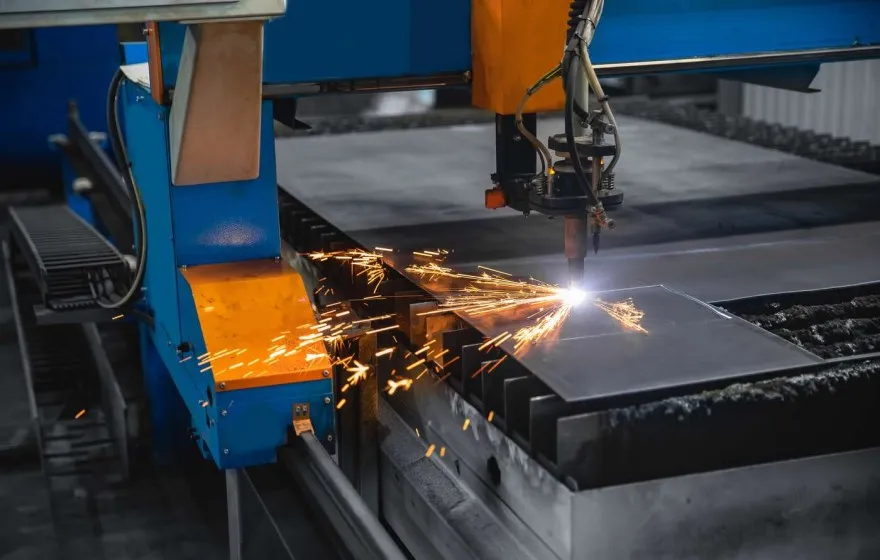Plasma cutting is a metal cutting method that uses a high-velocity jet of plasma to melt and remove material from a workpiece. Besides plasma cutting, there are several other common methods of metal cutting:
- Oxyfuel Cutting – Conducted from oxygen and a fuel gas, this combination creates a flame to cut through metal. oxyfuel grants a versatile cutting option that can operate on a wide range of materials, but its precision capabilities are limited due to the nature of the cutting flame.
- Waterjet Cutting – Waterjet cutting utilizes a high-pressure stream of water mixed with abrasive particles to cut through the material. It is also a versatile cutting method but has a slower cutting speed and can not cut tough materials in the way oxyfuel cutting can.
- Abrasive Cutting – Abrasive cutting involves using a rotating wheel to cut through the material. This method is a cost effective option that involves affordable cutting materials, and has a minimal heat generation. The precision of this method is lessened like the oxyfuel method, as it may result in rougher edges for the final product.
- Shearing – Shearing involves using a sharp blade to apply a cut through the material. Shearing allows for the precise cuts and can be used on various materials. It does, however, involve safety concerns considering its use of sharp blades and materials.
Each of these methods has its own advantages and limitations. It’s beneficial to understand the pros and cons of each of the possible cutting methods to understand which method is best for your intended project.
Pros and Cons of Plasma Cutting
Plasma laser cutting has many advantages that makes it a solid cutting technique to utilize within your intended project. The following are just a few of the pros of plasma cutting:
- Versatility – Plasma cutting can be used on a wide range of conductive materials.
- Speed – Plasma cutting is generally faster than other methods like oxyfuel cutting, as the plasma jet can achieve higher cutting speeds.
- Precision – Plasma cutting can achieve high levels of precision, allowing it to best match your intended design.
- Clean cuts – Plasma cutting produces clean and smooth cuts, with minimal rough or jagged edges.
- Portability– Plasma cutting machines are relatively compact and lightweight, making them more portable compared to some other cutting methods.
While plasma laser cutting has a vast range of applications and advantages, it has some limitations that might not be beneficial to all projects or production environments. The following are some of the cons of using plasma cutting:
- Thickness limitations – While plasma cutting is versatile, it may have limitations when it comes to cutting very thick materials. Oxyfuel cutting is often preferred for thicker materials.
- Heat-affected zone – Plasma cutting generates a significant amount of heat, which can result in a heat-affected zone (HAZ) near the cut edge. Waterjet cutting is a preferred method for a low HAZ zone.
- Initial cost – Plasma cutting machines can be more expensive to purchase and set up compared to some other cutting methods, though it’s versatility and portability makes it a cost-effective option in the long run.
Understanding the pros and cons while selecting the appropriate metal cutting method based on the specific requirements of the project is paramount to the success of your final product.
Contact Us
Every industrial CNC machine from Cutting Systems delivers the cut quality, productivity and precision that your application demands. We consider all of our customers to be valued partners and provide unparalleled service to ensure your needs are met. If you have any questions about our steel cutting machinery, feel free to contact us – we’re always happy to help. If you know what you need for your industry, try requesting a quote to begin building the CNC machine that will get the job done right every time.
